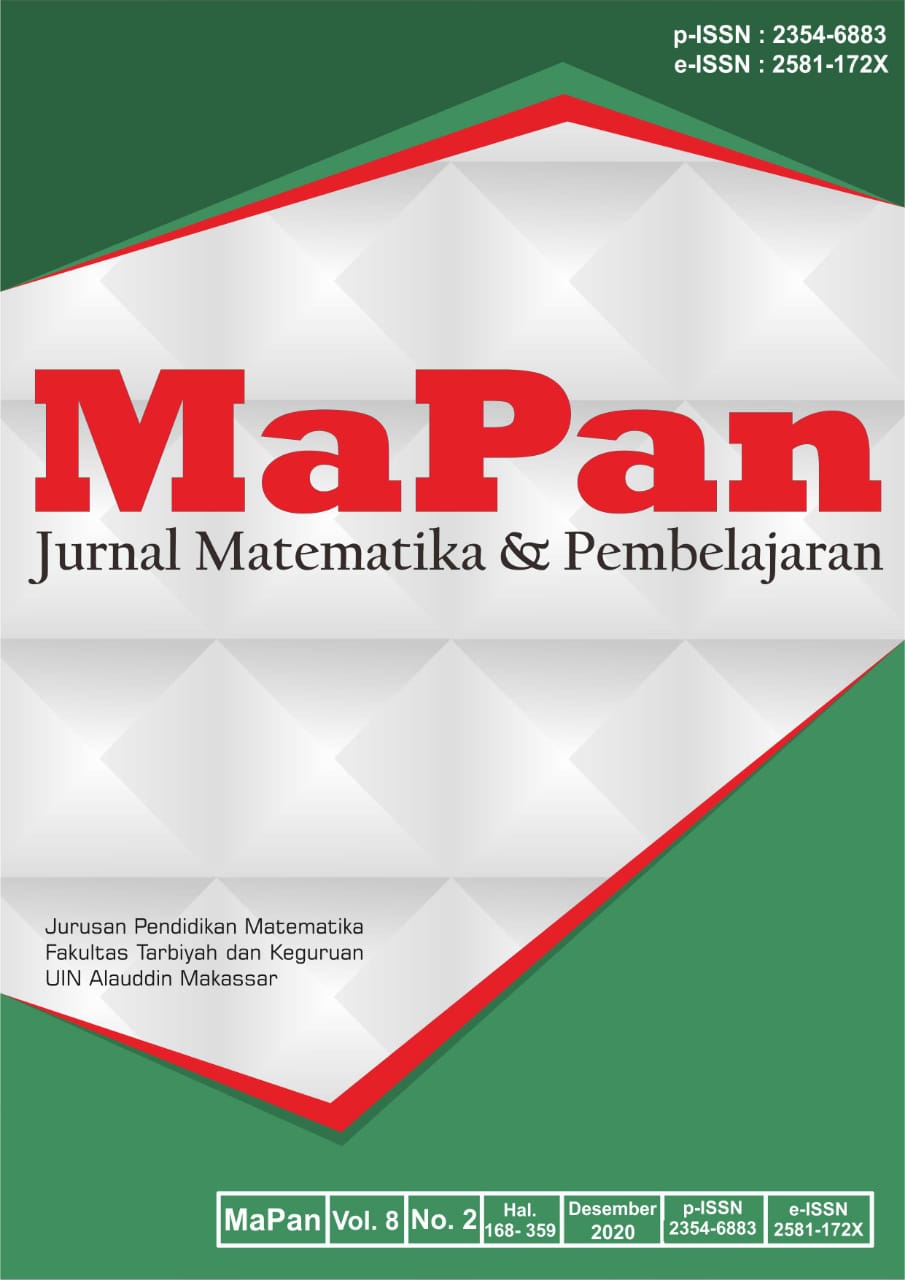MATHEMATICAL COMMUNICATION SKILLS BASED ON GENDER
Abstract
This study was aimed to describe the mathematical communication skill of eighth-grade students of SMP IT Insan Mulia of Batanghari based on gender in solving questions about circle material. The subjects of this study consisted of 21 male and 21 female students. The research method used is descriptive qualitative. The data collection instrument used in this study is the mathematical communication skill test. The mathematical communication skill test instrument consists of three questions in the form of an essay. The results showed that in general, the mathematical communication skills of male and female students are in a low category. The low ability of students' mathematical communication is due to a weak understanding of concepts, not understanding the usefulness of mathematical symbols, and students' unfamiliarity in working on problems. Male and female students have different mathematical communication skills. Female students have better communication skills than male students in conveying ideas to provide an explanation on each indicator of the mathematical communication skills test.
Downloads
References
Baroody, A. J. (1993). Problem solving, reasoning, and communication. New York: Machmillan Publishing.
Cahyono, B. (2017). Analisis keterampilan berfikir kritis dalam memecahkan masalalah ditinjau dari perbedaan gender. AKSIOMA : Jurnal Matematika Dan Pendidikan Matematika, 8(1), 50–64. https://doi.org/ 10.26877/aks.v8i1.1510.
Hodiyanto, H. (2017). Pengaruh Model pembelajaran problem solving terhadap kemampuan komunikasi matematika. Jurnal Riset Pendidikan Matematika, 4(2), 219–228. https://doi.org/10.21831/jrpm.v4i2.15770.
Istikomah, D. A. (2014). Upaya peningkatan kemampuan komunikasi matematis siswa dengan model pembelajaran kooperatif di SMPN 2 Sedayu Yogyakarta. AKSIOMA Journal of Mathematics Education, 3(2), 65–76. https://doi.org/10.24127/ajpm.v3i2.333.
Kusumaningsih, W., Saputra, H. A., & Aini, A. N. (2018). Cognitive style and gender differences in a conceptual understanding of mathematics students. Journal of Physics Conference, 1280, 1–6. https://doi.org/10.1088/1742-6596/1280/4/042017.
Lanya, H., Zayyadi, M., Aini, S. D., & Haris. (2020). Mathematic communication skills in senior high school based on gender differences. Pi: Mathematics Education Journal, 3(2), 15–21. https://doi.org/10.21067/pmej.v3i2.4718.
Lestari, K. E., & Yudhanegara, M. R. (2015). Penelitian pendidikan matematika. Bandung: Reflika Aditama.
Murtafiah, W. (2016). Kemampuan Komunikasi Matematika Mahasiswa Calon Guru Matematika dalam Menyeesaikan Masalah Pesamaan Diferensial Ditijau dari Gender. Jurnal Math Educator Nusantara, 2(1), 31–41. Retrieved from https://ojs.unpkediri.ac.id/index.php/matematika/article/view/399.
NCTM. (1989). Curriculum and evaluation standards for school mathematics. Reston, VA: NCTM.
Nurhayati, A. S., & Aripin, U. (2020). Students thinking process in solving the problems of social arithmetic stories test based on gender. MaPan : Jurnal Matematika Dan Pembelajaran, 8(1), 103–113. https://doi.org/10.24252/mapan.2020v8n1a8.
Pratiwi, D. D. (2015). Analisis kemapuan komunikasi matematik dalam pemecahan masalah matematik sesuai dengan gaya kognitif dan gender. Al-Jabar : Jurnal Pendidikan Matematika, 6(2), 131–142. https://doi.org/10.24042/ajpm.v6i2.28.
Rizta, A., & Antari, L. (2018). Pengembangan tes kemampuan komunikasi matematis pada materi sistem persamaan linear untuk mahasiswa calon guru matematika. AKSIOMA : Jurnal Matematika Dan Pendidikan Matematika, 7(2), 291–299. https://dx.doi.org/10.24127/ajpm.v7i2.1525.
Sutiarso, S. (2019). The ability of students’ mathematical proof in an introduction to group theory in terms of gender differences. Jurnal Pendidikan MIPA, 20(2), 60–67. Retrieved from http://repository.lppm.unila.ac.id/19852/.
Thalhah, S. Z. (2014). Peningkatan kemampuan komunikasi matematika melalui pembelajaran dengan pendekatan problem posing pada siswa Kelas X6 MAN Pinrang. MaPan : Jurnal Matematika Dan Pembelajaran, 2(1), 86–104. https://doi.org/10.24252/mapan.2014v2n1a7.
Untarti, R., & Subekti, F. E. (2016). Kemampuan komunikasi matematik mahasiswa ditinjau dari gender pada materi telaah kurikulum SMP. Pyhtagoras: Jurnal Program Studi Pendidikan Matematika, 5(2), 139–150. https://dx.doi.org/10.33373/pythagoras.v5i2.466.
Wahyuningsih, S., Sani, A., & Sudia, M. (2019). Analisis proses berpikir siswa SMP dalam memecahkan masalah matematik ditinjau dari gaya kognitif dan gender. Jurnal Pembelajaran Berpikir Matematika, 4(1), 121–132. https://dx.doi.org/10.33772/jpbm.v4i1.7171.
Yuliana, Y., & Winarso, W. (2019). Penilaian self efficacy dan kemampuan pemecahan masalah matematika berdasarkan perspektif gender. Mapan : Jurnal Matematika Dan Pembelajaran, 7(1), 41–60. https://doi.org/ 10.24252/mapan.2019v7n1a4.
Zakiri, I. K., Pujiastuti, E., & T.S.N., A. (2018). The mathematical communication ability based on gender difference on students of XI grade by using problem based learning model assisted by probing prompting technique. Unnes Journal of Mathematics Education, 7(2), 78–84. https://doi.org/ 10.15294/ujme.v7i2.20645.
Copyright (c) 2020 Dimas Alfarisyi, Sugeng Sutiarso

This work is licensed under a Creative Commons Attribution 4.0 International License.


